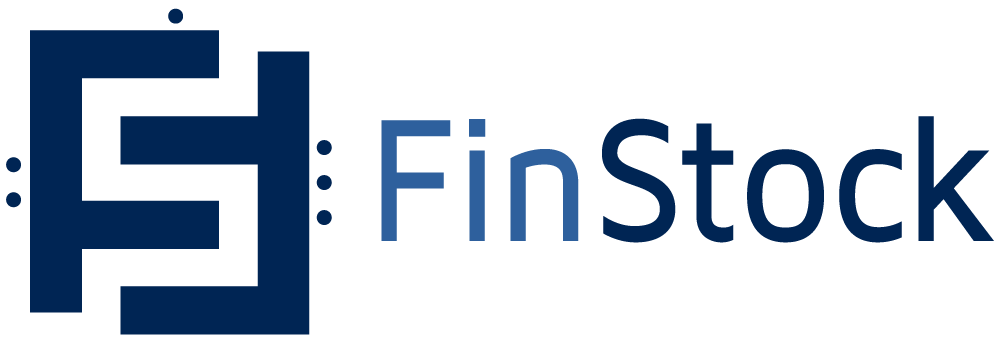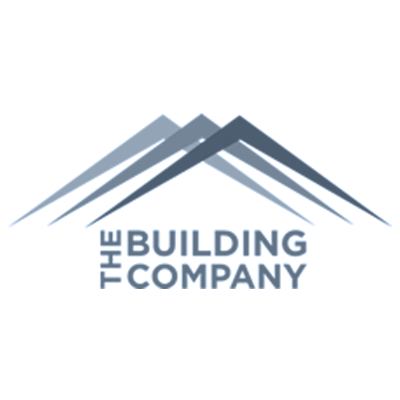In episode six of Be Ready for Anything, ToolsGroup’s Pre-Sales Manager for Europe, Birger Klinke, talks about what retailers should expect in 2021 and how they can leverage probabilistic forecasting and automation to adjust to a changing marketplace.
Check out the video below.
Or listen and follow on Spotify.
Transcript
This podcast was designed for video or audio enjoyment. The following transcript was created using a combination of automated and human transcription. Please check the audio version before quoting from the transcript.
Katie Van Adzin: Hi everyone and welcome back to the Be Ready For Anything podcast from ToolsGroup. I’m your host, Katie Van Adzin, and today I’ll be talking with Birger Klinke, ToolsGroup’s Pre-Sales Manager for Europe. Thanks for joining me Birger. How’s it going?
Birger Klinke: Hi. Nice to meet you again, Katie. Yeah. I’m happy today having an interview with you and let’s see where we go.
Katie Van Adzin: Thanks. Yeah. So as we all know 2020 was anything but normal and its effects on retail supply chains will linger into this year as well. What do you predict will be different for retailers in 2021?
Birger Klinke: Yes I fully agree with you that we had a sort of a disaster probably for a lot of companies in 2020 but on the other hand, I think also for a lot of companies still in, especially in retail, it was a changing year. We saw how would they enter the market and how they see the market. Especially, I would say when we were talking about the Amazon effect I would say now it’s present more than ever maybe even changing the word into the COVID effect. And digitalization is more than present. The brick and mortar business, especially from the German perspective, decreased 80% of the inner city companies, especially retail companies are at risk with the existence there, and therefore I definitely see the huge potential for, on the other side, for companies who saw the early stage of investing into retail and especially on online retail sector. So when you see that, basically companies really didn’t prepare for that on the point of sale side, when you see that perspective, on the other hand.
On the supply side, in 2014, I remember that DHL was talking about resilience where everyone was wondering what that really meant and how to set up the risk management globally. And I think now every company would be happy to have something like that. When we dig a little bit deeper into the point of sale side, I think that companies who invested in digitalization were really good and really prepared, especially in German markets. To refer to that and give you some numbers was that last year we saw an increase of overall 30% in the online sector. So before, everyone was still speculating if online will be present, if this will be the new channel where customers will go to. Especially, I would say, in the supermarket business to the food retail business and construction material business, we had a huge increase. On the other hand, of course, as the consumer was not so focused on other industries, we had a slight decrease also there. So therefore, I think that companies who were prepared had, let’s say, a multi-channel strategy already present, didn’t struggle that much, and as I said in the introduction, that it was probably not the disaster year. But other companies were not really prepared. Let’s say, the fashion industry, who just sell from stores, couldn’t get rid of probably their stock at all. And other companies were, let’s say, over the years preparing already a complete online strategy, and they only set up for that, as for example, Zalando or HelloFresh. When you look at the fashion industry, the food retail industry, when you look at their shares, their shares raised up, for example, by 100% in Zalando, 200% with HelloFresh. So this is really, really a big number and these companies are, I would say, prepared now, and they probably smile at the companies who were only before present in the store business, and nobody really believed in that.
I spoke about the DHL resilience or risk management. So a lot of researchers predicted or economists predicted that it will go to a de-globalization or to a re-nationalization. I wouldn’t say that really companies now step back from, let’s say, the global supply chain. I think it’s more that the idea of sourcing and how to buffer certain inventory will be definitely more localized. You see that, especially that the expected warehouse space is increasing rapidly, so it doubled up last year. So also the demand for it and even the demand couldn’t be really supplied with inventory space. So this is definitely something from the supply side, what is the takeaway? And also the investments we’re taking from bigger companies in the Asian market. I don’t think that they will step back from this big investment, and also, for example, when you look at China, China is in five years, I think the biggest economy in the world. And I think companies will be happy to be present on that market with production. So not only bringing that to Europe but keeping it there and also be present on that market and don’t wanna miss the chance.
At the end, maybe towards the supply chain, looking at the transportation, I think companies were also creative and especially after the COVID release a little bit, let’s say, the limitations. There was a big peak. All the shipping companies were completely, let’s say, sold out. So companies look for alternative space. There’s also, let’s say, a rail track from China to Germany, which was increasing by 25%. And not just using that as an alternative. Even when you look at the numbers, it’s 95% more sustainable and it’s halfway cheaper than using air freight logistics. Therefore I think for this year, I’m pretty curious how companies will react on all of these trends and deal with it and what of, let’s say, the speculation really comes through. But I think it was definitely an interesting year. And I’d give, let’s say, the digitalization a big peak and also in terms of supply new ideas and probably also to be more regional again then to just think in global sourcing.
Katie Van Adzin: Yeah, and with all this change that you’ve discussed and all this unpredictability how can probabilistic forecasting help retailers explore a broader range of hypothetical scenarios?
Birger Klinke: Yeah. So I think it’s definitely a good question. How companies also can be better prepared now and what are, let’s say, movements and decisions from the management to investing. I think definitely with a general approach. So let’s say the generic forecasting approach of companies and also with their planners exceeded slightly with all these impacting factors that we just discussed or that I just named before. So I think especially with probabilistic model that we’re also offering with our application, a frequency based model–what means is so that we look at the quantity and at the order lines–that definitely together gives you the chance to have a better picture on how the sellout sides, especially the consumer side looks like and how to react on that. And we support the user with, let’s say, the combination out of that to give him the best probabilistic model that you can find on the market.
In addition, of course, the user always at the end has to take the decision, but relying on the model and having the possibility to define scenarios because we don’t know what will happen now in February, how the restrictions for example will be with COVID, how it looks like in mid of the year, end of the year and let’s say next year, depending on industry, but especially in retail where I would say we have shorter lead times. It definitely makes sense to work with a probabilistic model to see how basically the consumer behaves, how he basically consumes, this definitely gives the probabilistic model you the possibility to decide with different scenarios where to invest and which decision to make and supports the plan and day-to-day routine planning, for example, with S099.
Katie Van Adzin: Some retailers particularly, those in e-commerce are experiencing crushing demand as a side effect of the pandemic. How can an automated planning system help them keep up?
Birger Klinke: Yeah, I think especially in the e-commerce sector, what I mentioned before, they encountered a huge peak due to the available channel. It’s basically available at any time, everywhere. And also companies like Uber Eats, Deliveroo, etc. supporting, let’s say, the last mile, so makes that basically still available to enter to a marketplace where you basically have the possibility to see all assortment and order from there. This of course is the reason why we had the big peak in e-commerce. But these companies, especially in the beginning when we talk about startups who now encounter the bigger peak, so more regional companies in food retail which popped up in the market, that they were focusing on sales and marketing and not so much on supply chain. So therefore, I think, especially in supply chain, they are lacking, let’s say knowledge, how to ramp up there and how to build a network that has, let’s say, resilience, what we talked before, and can basically answer to the big demand that is coming. Therefore it’s always good to offer them a sort of automated planning, as our application S099 is doing, to basically give you the chance in an easy manner to provide you what we discussed before about a probabilistic model, first of all for the forecast but then also an end-to-end solution over the fulfillment and replenishment part to basically go hand in hand so that we take out from the forecasting part to be more reliable to answer on certain trends. Especially in the e-commerce, I think it’s really important to be reactive. So especially in the forecasting part, I think it’s good to see certain patterns in the short term, and to react on them, and also be with a certain service level that you would like to achieve, able to answer that. I think for that, it’s definitely necessary to have a supply chain solution. And lately I just maybe can refer to a discussion with a prospect also from e-commerce that the representative there from the supply chain department told me that they exceeded basically the functionality of excellence and of course, this is nothing where we can handle these peaks with. We have to look for, let’s say, really a supply chain planning solution not working with mass data in a Excel spreadsheet and spend a lot of time on data tweaking. This can be all done with, yeah, solution out of the shelf, which we are offering, and to provide basically with that a good entrance for small and mid-size companies, but as well for big companies. And for this, I think there are different options that we can offer to them. That, for example, if the knowledge is not given that we can support also with resources and let’s say a sort of outsourcing principle that we have or, let’s say, a more light approach to really start with just recently released cooperation with Microsoft, our light platform from S099 and many other options. So I think definitely in e-commerce, it’s a must-have also besides being strong, let’s say, on the point of sale side to also have a strong supply chain behind and make it more and more resilient.
Katie Van Adzin: As retailers are going about this, do you have any tips for how they can reduce noise in their demand forecasting?
Birger Klinke: Yes. I think coming also from what I said before in the e-commerce sector, that there we, I think, lately experience a big peak due to COVID and the readiness wasn’t really given in the supply chain part. So to basically have an overview of your demand and start and ramp up, I think it’s mostly important to establish a solution, a supply chain planning solution. How we do that is basically to… We’ve talked about demand segmentation when we talk about reducing noise. So what demand segmentation means is that we look at the demand first of all, and we try and slowly to ramp up the confidence of the planner to trust the system. And therefore we start more in a semi-automated base. Still our vision is to go more and more automated when we talk about the routine tasks. But starting with our trainings, when we implement our solution and give guidance to our customers, the focus here has to be, first of all, always in focus that the user can trust the system when it overtakes certain daily routine tasks. This we do, how we do that. I talked about demand segmentation. So when we talk about demand segmentation, it can be a big peak due to a promotion or a certain event in a location. So our system automatically detects when the user enters our solution. We have a dashboard which basically has an overview of all tasks that he has to do and gives you guidance. And in these tasks, for example, in the demand part we separate the demand into demand peaks, for example, or demand troughs, the opposite. By identifying this, we guide the user basically and request them to qualify these outliers and basically give our solution in a self-learning manner. The possibility to learn with the user, how to react on these outliers. So that in the next step, in a fully automated manner, the system automatically can detect these outliers. For example, when we talk about the demand peak or basically lost sales due to an out-of-stock situation for example, but there was a certain demand. We basically correct this demand with, we call it so-called dummy demand and correct basically the– we’re talking about demand cleansing here–the demand in the past, so that the forecast in the future basically smoothened and basically represents also the the real demand from the point of sale side.
Katie Van Adzin: So my final question for you today, is how can AI enhanced forecasting help retailers factor seasonality into their forecast?
Birger Klinke: Yeah, I think this is also a really good point. We talked about, I would say, more probabilistic forecasting before and, let’s say, more of the baseline forecasting. On top of that, we are–and I think a lot of companies doing that and also from the market, it’s already always requested–talking about AI and machine learning, what this really means. I think it means a lot when we look at the forecast accuracy when we see a robot answer the question like this. But how to implement and use that, I think also now, when we look back to also last year and also to the evolvement of digitalization, that more and more users of digital devices used, for example, self scanning, order online. So more and more information are really present. You see that how to deal with this data. First of all, you need to store that. So in 2020, and in 2021, we see that the budget of companies are between 25 and 30% of the total budget, IT budget that they released. So first of all, we see that there’s a lot of data available.
So what we do with the data–we designed standardized processes as you mentioned, for example, for treating, for example, seasonality patterns out of additional data effects and what means these additional data effects. We not just talking about the master information, we not just talking about typical market information or, let’s say, material information. Here we talk about additional attributes who really, let’s say, define the characteristic of a market or the product, and basically mix them, connect them. And this brings us basically to the point that we can use this information besides, let’s say, also external factors. Because now, to give you a practical example, look at certain markets or sales markets that, also due to COVID, the accessibility is different, so the consumer behaves different because maybe he doesn’t have so much access also due to, let’s say, of course, weather trends in that region, that can just not just be COVID. But to consider all these factors, that means we have to be more granular in taking up the data. The data, I think now with the digital push, thanks to COVID, it’s definitely available, and we need standardized engines to treat this data to leverage our probabilistic forecasting model and be as I said, more granular and more detailed. And like this, we detect more patterns that we can use to improve our forecast accuracy. I think this is definitely a good point also where companies who have already our solution available to think about advancing this with now the available data set from, yeah, big data, and then you’re reusing it with machine learning.
Katie Van Adzin: Well, thank you very much for all these insights Birger.
Birger Klinke: Thank you for the interview. Take care.


